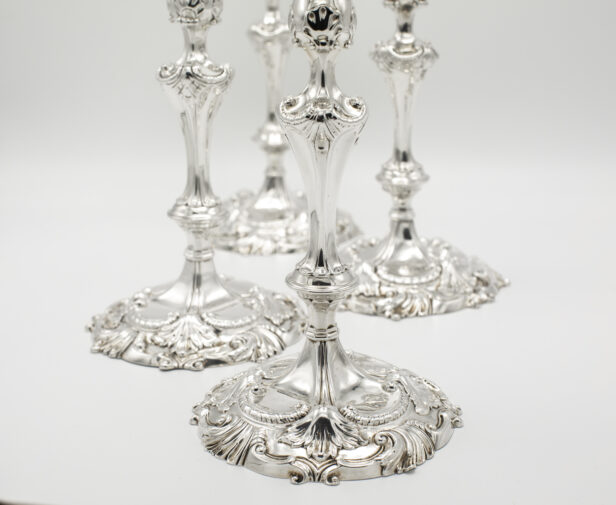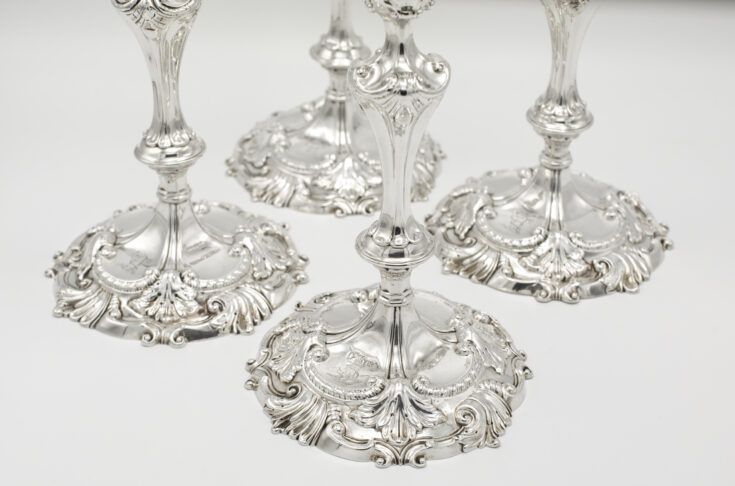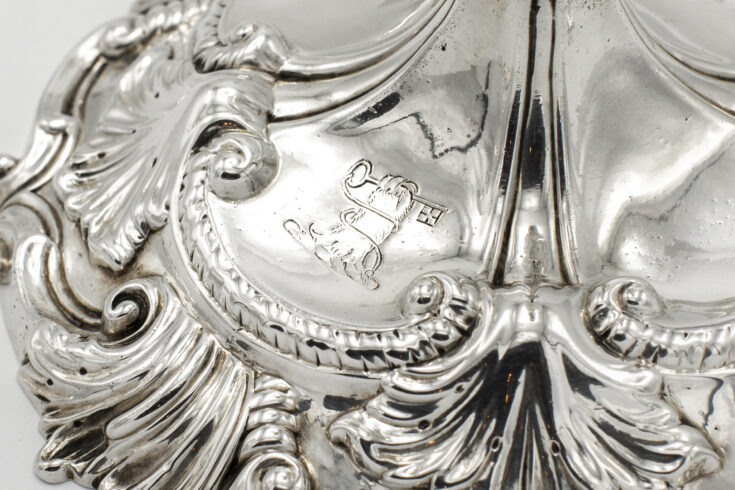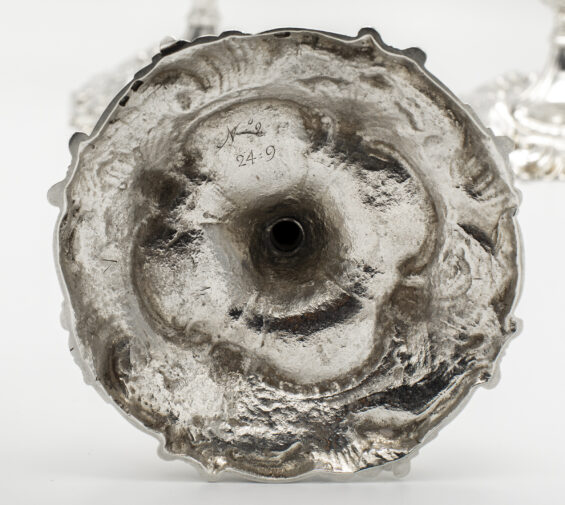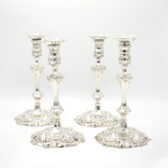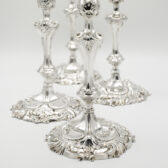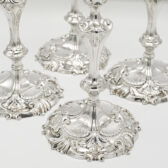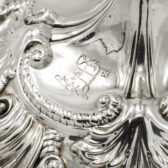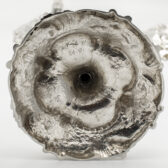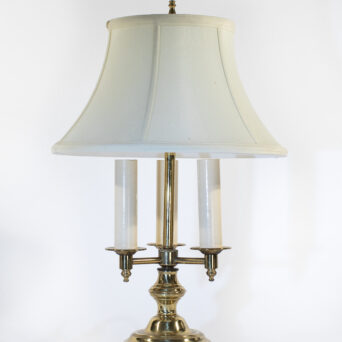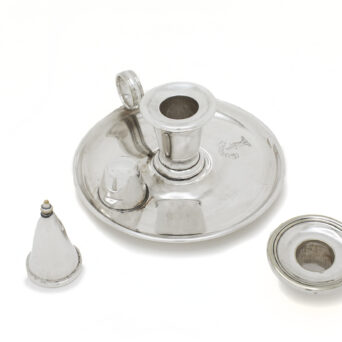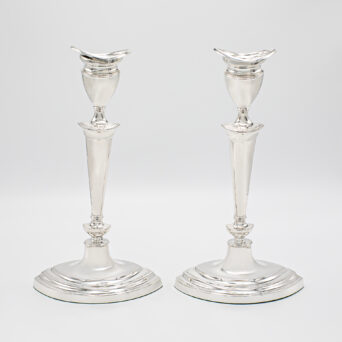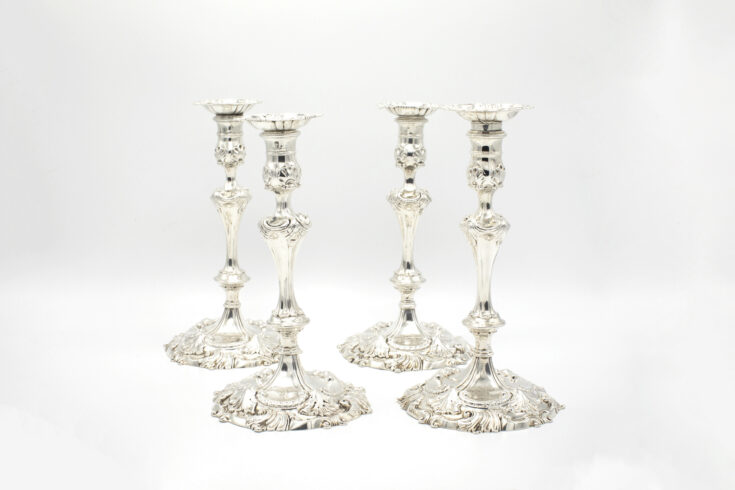
Set of 4 Antique George III English Silver Candlesticks
The Rococo style and its origins can be traced back to France beginning with the reign of Louis XV. This popular style which continued throughout the reign of Louis XV was a reaction to the previous controlled and rigid style of Louis XIV’s reign. The term Rococo derives from the French word rocaille. Rococo is often described as the final expression of the Baroque movement with its exceptionally ornamental and theatrical look. The free flowing exuberance was abundantly used in all forms of decoration. This was best shown outside as exemplified in fountains and gardens and inside with the interiors of the grand palaces. It has often been mentioned that this style of lines, swirls and elaborate decoration was the forerunner of Art Nouveau. Rococo flourished in English design between 1740 and 1770. It first appeared in English silver with immigrant artists and silversmiths including Huguenot refugees from France, playing a key role in its dissemination. Silverware from this period featured natural motifs including rocks, shells, plants and marine items. A particular emphasis was put on the shells and flowing wave – like lines. Thus, this Rococo style became quite popular in many other countries as well as in France.
Cast candlesticks started to appear circa 1685. In general, they tend to be shorter and heavier than the loaded ones. Cast candlesticks are created by silver being poured into moulds to create various components of the design. They are then soldered together to form the finished item. Silver being a heavy element will result in a substantial candlestick. As a result of this, these types of candlesticks have a premium over a loaded or filled item. The first loaded candlesticks appeared circa 1765. The production of the loaded candlestick uses a sheet of silver, formed to create various components and silver soldered together. The big difference between these two types of candlesticks is that there is considerably more silver in cast candlesticks than in filled candlesticks.
An impressive and exquisite set of 4 Antique George III Silver cast Candlesticks in an elegant Rococo style. They were made by the excellent silversmith Jacob Marsh who began his silversmithing by apprenticing to the illustrious silversmith Gabriel Sleath. The detail work on these candlesticks are exceptional with their scroll and leaf patterns embellished on the bases and the knopped stems. They are in pristine condition and there are no repairs on them. The hallmarks are quite clear and they are a wonderful set of 4 George III Silver cast Candlesticks in the Rococo style.
